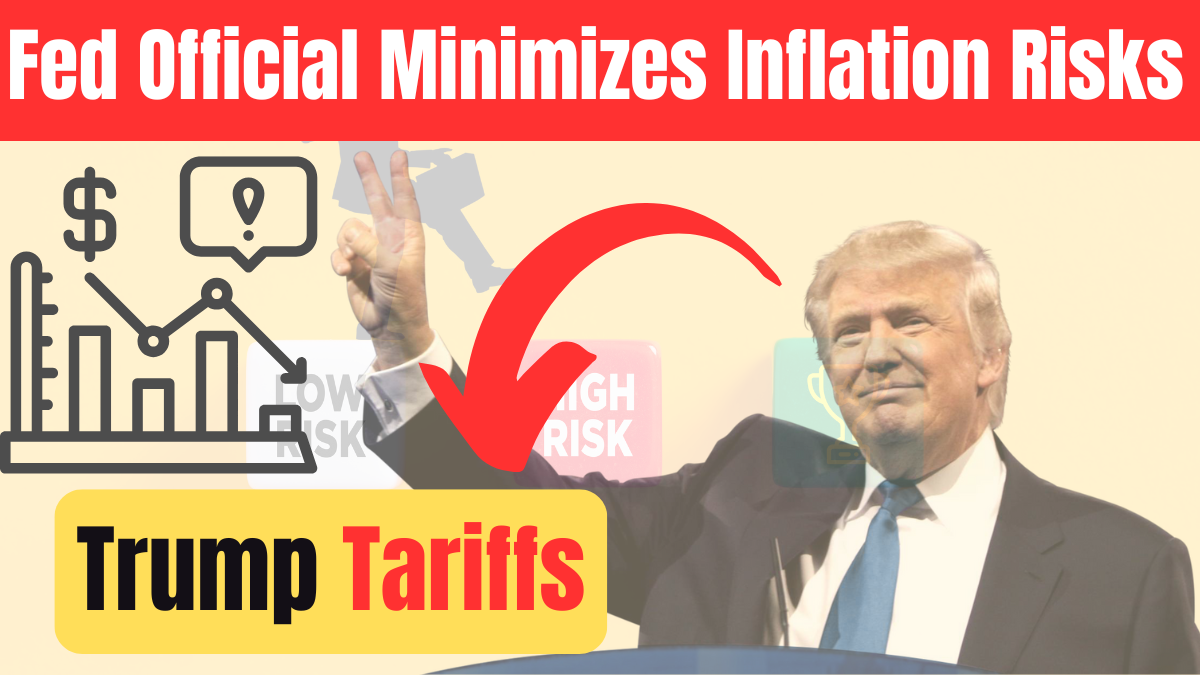Federal Reserve Governor Christopher Waller has downplayed concerns over inflationary pressures from former President Donald Trump’s latest tariff measures. Speaking in Australia, Waller noted that while the tariffs could modestly increase prices, the effect is likely to be temporary and non-persistent. His comments suggest that the central bank is inclined to “look through” the short-term inflationary impacts of trade policies when making monetary decisions.
This perspective comes amid debates within the Federal Open Market Committee (FOMC) about how to respond to the evolving trade environment and its potential effects on economic growth and inflation.

What Tariffs Has Trump Proposed and How Could They Impact Prices?
In 2025, Trump’s administration has implemented and proposed a series of tariffs aimed at protecting US industries:
- 10% Tariff: Currently imposed on all Chinese imports.
- Proposed 25% Tariffs: Could soon affect imports from Mexico and Canada, two of the US’s largest trading partners.
- Planned Mid-March Levies: Targeting steel and aluminum imports with a 25% tariff.
- Reciprocal Tariffs: Under consideration for countries imposing high trade barriers or taxes on US goods.
While these tariffs are designed to bolster domestic production, they risk raising costs for US businesses that rely on imported goods, which could pass higher prices onto consumers.
How Do These Tariffs Affect the Federal Reserve’s Interest Rate Decisions?
The Fed’s current benchmark interest rate is between 4.25% and 4.5%, following a series of cuts in late 2024. Despite market speculation, the central bank is holding rates steady for now, citing persistent price pressures and economic uncertainty.
Key Points from Fed Officials:
- Christopher Waller: Sees limited and temporary inflation impact from tariffs.
- Austan Goolsbee (Chicago Fed President): Expresses concerns about the long-term effects on inflation.
- Beth Hammack (Cleveland Fed Head): Cautions that tariffs could contribute to sustained price increases.
- Jay Powell (Fed Chair): Stresses the need for more data before adjusting monetary policy.
These differing views within the FOMC highlight the complexity of balancing economic growth, inflation control, and external factors like trade policies.
What Is the Current State of US Inflation and How Might It Evolve?
In January 2025, US inflation unexpectedly rose to 3.0%, complicating expectations for imminent rate cuts. Waller pointed out that companies often raise prices at the start of the year, and inflation could ease in subsequent months.
| Month | Inflation Rate |
|---|---|
| January | 3.0% |
| December | 2.8% |
| November | 2.7% |
If inflation follows the 2024 pattern—high early-year readings followed by declines—the Fed may consider rate cuts later in 2025.
Why Are Tariffs a Concern for Inflation but Less So According to Waller?
Tariffs generally raise import costs, which can translate into higher consumer prices. However, Waller argues that:
- The price impact is modest due to supply chain adjustments and companies absorbing costs.
- Domestic production may fill gaps, stabilizing prices over time.
- Consumers may shift to alternatives, mitigating inflationary effects.
These factors support his belief that the inflation spike from tariffs would be short-lived rather than a prolonged issue.
What’s Next for US Monetary Policy in 2025?
Looking ahead, the Fed remains data-driven. Waller stated that if economic indicators mirror 2024 trends, rate cuts could be appropriate later this year. However, uncertainty around trade policies and inflation means the central bank is in a cautious “wait-and-see” mode.
- Potential Rate Cuts: Possible if inflation eases and growth slows.
- Holding Steady: Likely if inflation remains sticky or trade tensions escalate.
- Market Impact: Investors should expect volatility as policy directions become clearer.
FAQs
How do Trump’s tariffs affect inflation in the US?
While tariffs can raise import costs, Fed Governor Waller believes the inflation impact will be temporary and modest.
Why is the Federal Reserve not cutting rates despite rising inflation concerns?
The Fed is holding rates steady to observe how tariffs and economic data evolve, ensuring inflation remains under control before making policy changes.
What sectors are most affected by the proposed tariffs?
Industries reliant on imported raw materials, like automotive, construction, and electronics, may face higher production costs.
Could tariffs lead to a recession?
Tariffs can slow growth if trade tensions escalate, but Waller suggests the current measures aren’t severe enough to trigger a recession.
When might the Fed consider rate cuts in 2025?
If inflation cools in the second half of the year and economic growth slows, rate cuts could occur later in 2025.
How do tariffs on Canada and Mexico affect the US economy?
As key trade partners, higher tariffs on Mexican and Canadian imports could disrupt supply chains and raise costs for US consumers and businesses.
Why is there division among Fed officials regarding tariffs?
Different economic models and regional impacts lead to varied opinions on how tariffs will influence inflation and growth.
What should businesses do to mitigate the impact of tariffs?
Companies can diversify supply chains, negotiate with suppliers, and explore domestic sourcing to reduce costs.
Click here to know more.
Aanchal is a passionate writer with a keen interest in storytelling, content creation, and creative expression. She enjoys exploring diverse topics and crafting engaging narratives that captivate readers.
